Returning to My Ohio Roots: Scoping Out A Lake Erie Report Card
Bill Dennison ·One of my favorite quotes is by Wilbur Wright, from Dayton, Ohio. He said “If I were giving a young man advice as to how he might succeed in life, I would say to him, pick out a good father and mother, and begin life in Ohio.” I was incredibly fortunate to do exactly that. So when Verna Harrison, my Chesapeake Bay colleague, and Sandy Bihn, the Lake Erie Waterkeeper and the Executive Director of the Lake Erie Foundation, invited me to join them in Port Clinton, Ohio for a board meeting of the recently formed Lake Erie Foundation, I jumped at the opportunity. Lake Erie Foundation was formed by the amalgamation of two organizations; Lake Erie Waterkeeper and Lake Erie Improvement Association. What I like about this is that both environmental interests and the business and community interests are represented.
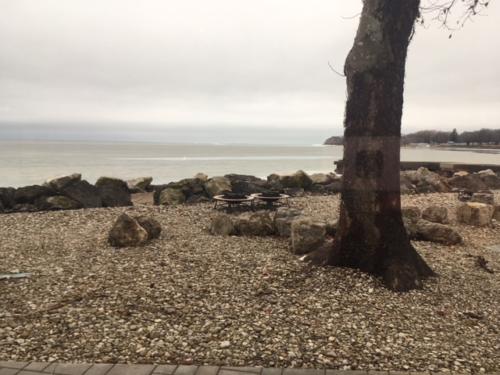
The board meeting venue was spectacular! Held at the Catawba Island Club, our meeting room was only a few feet away from the shore of a Lake Erie. Jim Stouffer, operator of the Catawba Island Club, played both board member and gracious host as well. I always appreciate being able to hold meetings or workshops close to the environment we are focused on, and the only way we could have been closer to Lake Erie would have been to be floating on a boat.
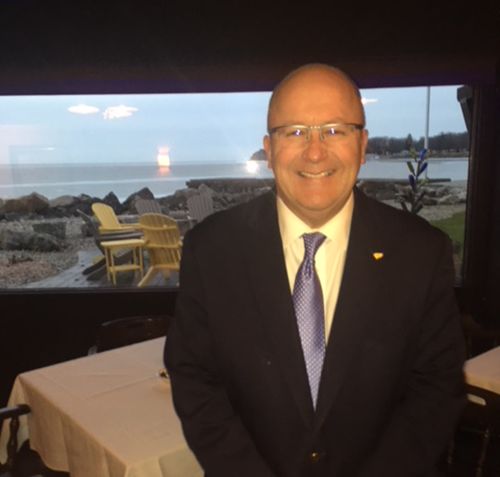
Verna and Sandy did a great job facilitating the board meeting. We covered a lot of topics. I made a short presentation about our experiences producing report cards. I enjoyed learning about the animal manure issues of northern Ohio and a creative solution that a couple of board members, Ron Wyss and Matt Fisher are investigating. They are proposing a fee added to cost of pork so that the farmers are not taxed, rather, the consumers support a fund that can be used to process hog manure into energy and/or fertilizer. They estimate that it would only add about 1-2 cents per pound of pork. Ron and Matt identified an interesting organization, Newtrient, focused on innovation in agricultural practices. Verna had our Maryland colleague Chris Trumbauer call in for some excellent advice to the board on messaging and communication.
At the reception following the board meeting, I told a couple of stories and introduced a guest. The first story was the 1913 flood in Dayton, Ohio that my grandmother told me about. This flood was and still is the biggest natural disaster in Ohio’s history. Dayton is situated along the Great Miami River at the confluence of several tributaries, including the Stillwater River, Mad River, and Wolf Creek. The original European settlers ignored warnings by the native Americans to their peril. In March 1913, extended high rainfall resulted in the Great Miami River cresting its banks and inundating the city. Hundreds of people died, and tens of thousands of houses and businesses were damaged or destroyed. My grandmother lived with her parents on a hill just north of the city. She remembered helping people off the rescue boats that pulled up to her back yard.
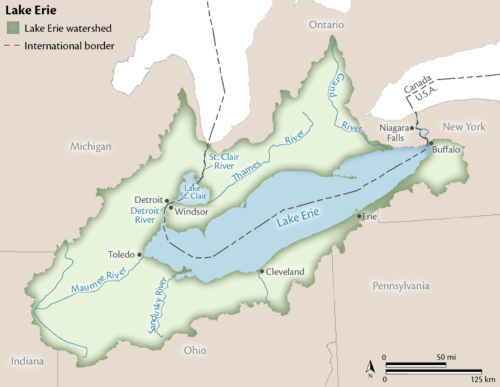
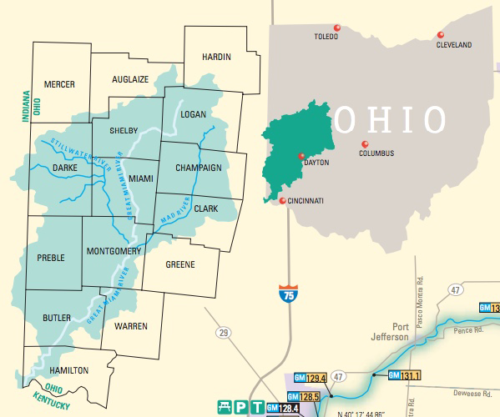
What was remarkable about this flood was the response. Daytonians formed the Miami Conservancy District and raised funds through private donations using the slogan “Remember the promises you made in the attic!” The people of Dayton responded rapidly to this local initiative, and neither the state nor federal government were significantly involved. With the funds, the citizens built five earthen dams upstream of Dayton and channelized the city reaches of the Great Miami River. So here we are, over a century later, and Dayton has not flooded since this local initiative. Since the Lake Erie Foundation is looking to fund a report card effort through local government support, the Dayton model resonates.
The second story was about the creation of the Chesapeake Bay report card. We attempted to produce the report card through the auspices of the federally led Chesapeake Bay Program. During the late stages of producing this initial report card, the Environmental Protection Agency decided to pull out. We decided to continue the report card anyway under the auspices of the University of Maryland Center of Environmental Science.
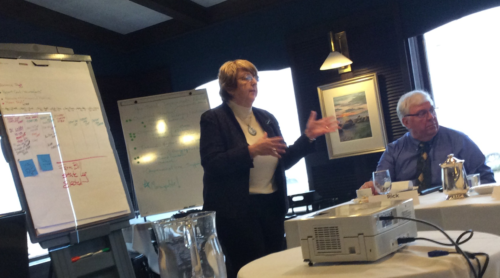
The initial report card, created in 2006, had the lowest score in the Patapsco and Back Rivers reporting region, which was no surprise considering the location of the city of Baltimore along the shores of this reporting region. The big surprise, however, was that the second worst score Choptank River on the Eastern shore of a Maryland. There are a few small cities along the Choptank, such as Easton, Cambridge, Denton, but it is largely an agriculturally dominated watershed. Like the Dayton flood woke up people in Ohio, this served as a wake up to local residents. They embarked on a series of discussions and initiatives to improve the Choptank River. Since I live in Easton, I met with various city and county council members and would read in our local paper, the Star Democrat, various articles that would start with the following statement: “Because the Choptank River received a poor grade in the Chesapeake Bay report card, such and such initiative will be discussed, proposed or initiated.” I love it when people feel empowered to undertake activities at a local level, like the Dayton flood, rather than lobbying to state or federal governments to come fix their problems.
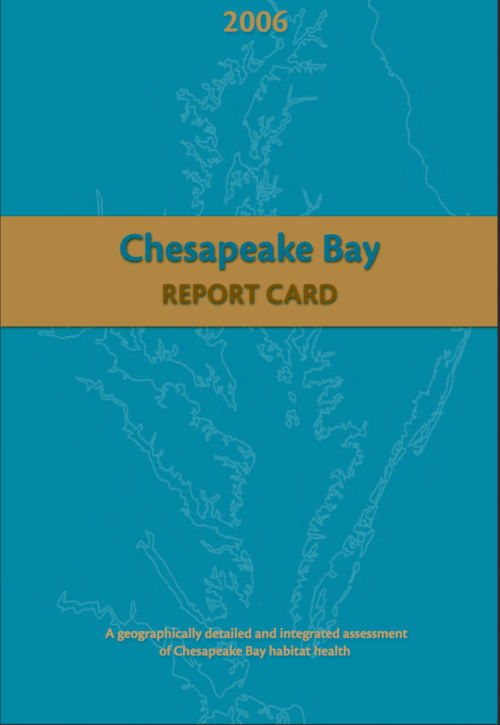
I introduced the board to Kelly Siman, a PhD candidate at the University of Akron. I met Kelly when she was participating in a workshop at the National Socio-Environmental Synthesis Center (SESYNC) in Annapolis. Vanessa Vargas-Nguyen, one of our Integration and Application Network graduate students, and Kelly are part of a SESYNC Graduate Student Pursuit, which is focused on developing a social ecological network analysis of Western Lake Erie. Kelly also told us about her involvement in the development of an inexpensive spectrometer that could be used by citizen science groups to measure nitrogen and phosphorus levels in water.
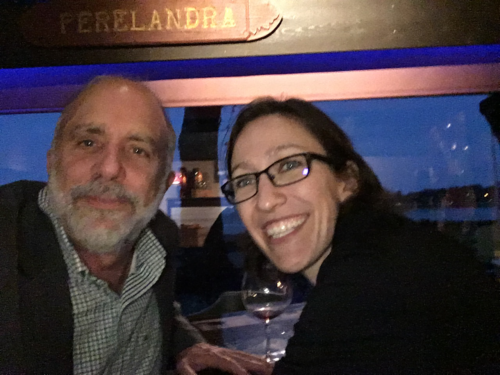
All in all, it was a great experience and I look forward to learning more about Lake Erie and working with people from my home state of Ohio. At the end of the workshop, I summarized our discussions with the following poem, which one of the board members, Dr. Earl Campbell, identified as heroic couplets. I don’t know about heroic, but it was definitely a series of couplets.
Lake Erie Foundation
21 Feb 2018
William C. Dennison
Meeting with the Lake Erie Foundation
Making my Chesapeake report card presentation
We learned to start calling algal blooms outbreaks
Because they challenge the integrity of the lakes
I learned that Lake Erie has three separate basins that are connected
But it is the Western basin that is the most affected
We all learned about messaging from Chris Trumbauer on the phone
So that the Lake Erie Foundation doesn’t go it alone
Gazing out on the Lake Erie from the Catawba Island Club
Talking about the lake while eating some good grub
Since Bill Myers had a birthday we even had some cake
And Verna provided lots of breaks and activities to keep us all awake
I am impressed with this group of Lake Erie advocates
And now I am aware the lake is not in dire straits
I’ve determined that it is not only Lake Erie that is great
But in fact these great people that will help improve its fate.
Photographs taken by Bill Dennison.
Lake Erie map product of IAN.
United States National Park Service, National Water Trails System https://www.nps.gov/WaterTrails/Trail/Info/55
About the author
Bill Dennison

Dr. Bill Dennison is a Professor of Marine Science and Vice President for Science Application at the University of Maryland Center for Environmental Science.
Next Post > To Move or Not to Move: Relocating The Chesapeake Bay Program
Comments
-
Frank 8 years ago
Growing up in and now owning a tree service in Cleveland, this reminds me of the great times I have had on the lake and NE Ohio. Thank you
-
John 5 years ago
The watershed from Lake Erie is so important to the lake as well as surrounding areas. I really enjoy rowing on the Cuyahoga and the water quality has improved greatly over the past decade. Thank you for your efforts to improve the environment.